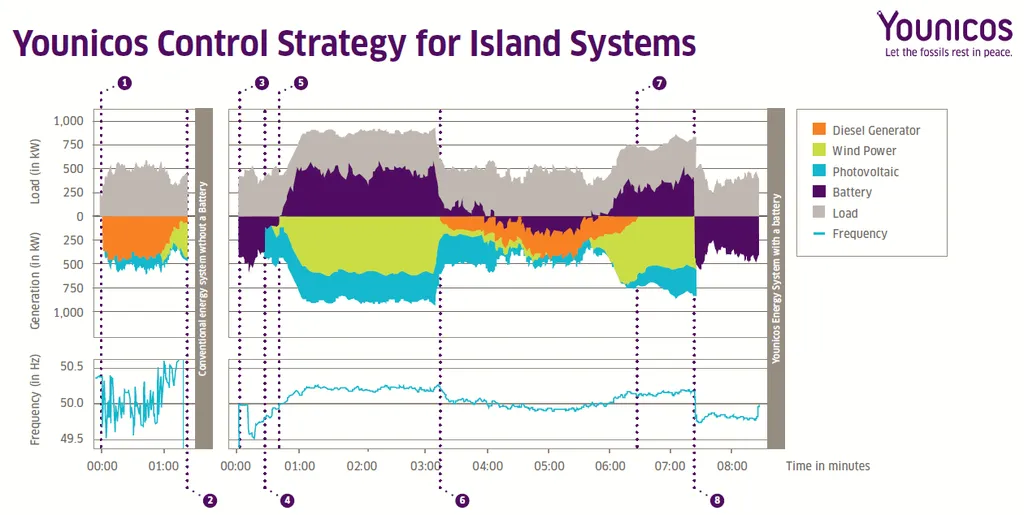In the evolving landscape of renewable energy, integrating large-scale wind power into the grid presents unique challenges, particularly in maintaining frequency stability and managing uncertainty. A recent study published in the journal *Energies* offers a novel approach to address these issues, potentially reshaping how wind power is managed in large-scale energy systems.
The research, led by Hongtao Liu from the China Southern Power Grid Company Limited (CSG) in Guangzhou, introduces a Coordinated Operation Strategy (COS) that leverages wind turbines (WTs) and battery energy storage systems (BESSs) to participate in frequency regulation. This strategy is a departure from traditional methods that rely solely on synchronous generators to counteract the variability of wind power.
“As wind power becomes a more significant part of our energy mix, it’s crucial to develop strategies that can handle its inherent uncertainty while ensuring grid stability,” Liu explained. The study addresses the strong nonlinearity that arises when incorporating WTs and BESSs into frequency regulation, a complexity that has previously made such models difficult to solve.
To tackle this, the researchers first established an improved Primary Frequency Regulation (PFR) model that considers the contributions of both WTs and BESSs. Based on this model, they derived an analytical expression for frequency stability constraints. Recognizing the uncertainty in wind power, they then applied box-type ensemble robust optimization theory to the day-ahead optimal scheduling process. This approach allows for a more resilient COS model that accounts for both wind power uncertainty and frequency stability constraints.
One of the study’s key innovations is the design of a linear equivalent transformation method. This method converts the original COS model into a Mixed Integer Linear Programming (MILP) problem, making it more tractable and practical for real-world applications.
The researchers tested their method on a modified IEEE 39-bus system, demonstrating its effectiveness in enhancing grid stability and managing wind power uncertainty. The implications of this work are significant for the energy sector, particularly as countries worldwide strive to increase their reliance on renewable energy sources.
“By integrating wind turbines and battery storage systems into frequency regulation, we can create a more stable and efficient grid,” Liu said. “This approach not only improves the reliability of wind power but also opens up new possibilities for commercial applications in the energy market.”
The study’s findings could influence future developments in grid management, encouraging energy providers to explore more sophisticated and adaptive strategies for incorporating renewable energy sources. As the energy sector continues to evolve, such innovations will be crucial in achieving a sustainable and resilient energy future.
Published in the journal *Energies*, the research offers a promising path forward for the integration of large-scale wind power, highlighting the importance of advanced modeling and optimization techniques in the energy transition.

